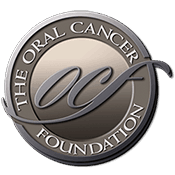Study on the oral hygiene of patients with oral cavity cancer
Source: Stomatologiia (Mosk), January 1, 2008; 87(6): 21-23 Author: M St Bratoicheva and V K Kondeva Many authors consider oral hygiene an important factor in the etiology and pathogenesis of oral cavity cancer. The aim of the present study was to establish the role of poor oral hygiene in the development of malignant lesions in the oral cavity. One hundred and three patients were interviewed. Questions, regarding oral hygiene were included in the interview. Results showed that 53,80% of urban residents brush their teeth twice daily whereas 65,52% of rural residents brush their teeth irregularly - p<0,001 (chi(2)=23,67). 46,88% of women clean their teeth twice daily. 46,94% of men do not maintain adequate oral hygiene - p<0,05 (chi(2)= 9,21). Regarding the brush, it was found out that 56,00% of females use a hard bristle toothbrush, the same refers to 28,04% of men - p<0,05 (chi(2)= 4,15). Hard bristle toothbrush was used by 48,88% of urban residents and 9,09% of rural residents - p<0,05 (chi(2)= 5,78). People up to 30 years of age use hard bristle toothbrush most often -39,13% - p<0,01 (chi(2)=12,26). The accumulated evidence provides further explanation why oral cavity cancer is more frequent in men, rural residents and in the elderly. Oral hygiene is a factor in the development of oral cavity cancer. Authors' affilation: stomatologii Meditsinskogo universiteta, Plovdiv, Bolgariia
